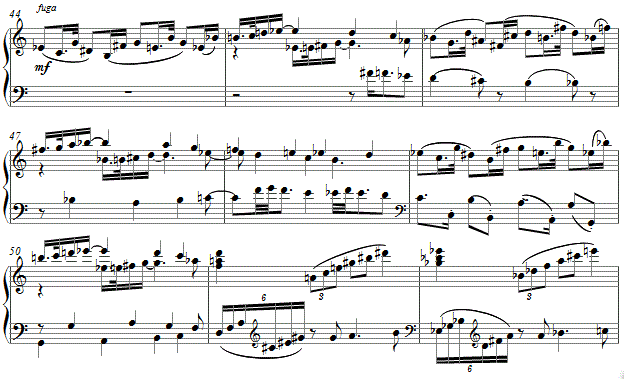Music and Texts of GARY BACHLUND
Vocal Music | Piano | Organ | Chamber Music | Orchestral | Articles and Commentary | Poems and Stories | Miscellany | FAQs
Chromatic Inflections and Fugue - (2012)
for piano
Writing in his blog, Roger Bourland spoke of a specific chord succession in a little, amusing "not guilty" plea, " for having found a similar "obsessive chromatic inflection" or "oscillation" in his ongoing work and that of film composer Alexandre Desplat. No plagiarism, to be sure, but composers have for generations built on one another's shoulders, themes and ideas. And why not? Our forbearers have taken this to a high art. Stravinsky noted, "A good composer does not imitate; he steals."
Roger then goes on to give an example and citations. I thought this charming, and make my guilty plea herein, taking for my own -- by Stravinsky's definition, stealing -- the "oscillation" as theme and ground for this small piano work. As with Richard Strauss' common tone modulations between tonal regions, this same technique is used in the smaller time frame between two chords sharing one common tone. For this C minor "leads" to B major, requiring the respelling of E flat to D sharp. The theme and work then proceeds from this, with my nod herein to Roger, and fine teacher and composer.
The fugue subject replicates the theme's "oscillation" on tonic and mediant, thereby extending into a melody the harmonic succession. The answer is at the expected dominant, and yet the resulting chromatic changes rush forward pell-mell.
3 pages, circa 4' 20" - an MP3 demo is here:
The score is available as a free PDF download, though any major commercial performance or recording of the work is prohibited without prior arrangement with the composer. Click on the graphic below for this piano score.
Chromatic Inflections and Fugue

